Why do the leaves of a room begonia dry and what to do about it?
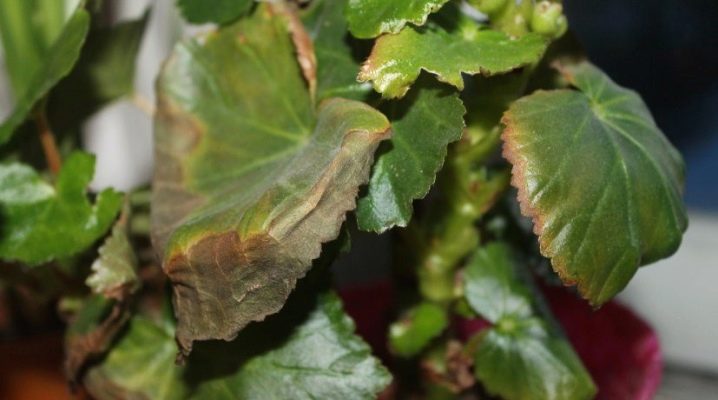
Begonia is a beautiful plant with bright, succulent foliage and gorgeous flowering. More than 1000 varieties of this flower are known. Different types of begonias amaze with the variety of shades of both the inflorescences themselves and the leaves. Unfortunately, this plant does not differ in unpretentious care, which is why flower growers often face drying out of its foliage, flowers and even the stem.
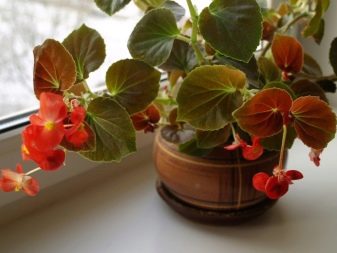
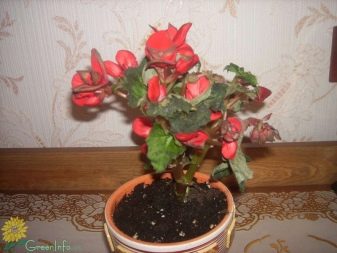
Breeding features
For abundant flowering and maintenance of "health" begonias need warm, but humid air and the optimal amount of water. The plant feels great in indoor breeding conditions, but if certain rules are not followed, it can get sick. To avoid yellowing or drying of the foliage, you need to adhere to the basic recommendations for flower care.
The following factors are fatal for him.
- Direct sunlight. Avoid placing the begonia pot on the sunny side of the windowsill.
- Insufficient level of air humidity. Under these conditions, the leaves gradually turn yellow. This can lead to the death of the plant. To increase the humidity in the air, it is recommended to use a household electric humidifier or hand sprayer. It is important that water droplets do not fall on the foliage as they can stain.
- Improper watering. Begonia is a moisture-loving plant that needs to be watered as it dries. It is not worth pouring the soil, it is enough for it to be saturated with moisture 2 cm deep.
- Temperature drops. Begonia loves warmth. It grows well and blooms at ambient temperatures from +16 to +23 degrees.
- Dense and unfertilized soil.
Do not forget about top dressing. The plant periodically needs to be poured with peat compositions or various preparations with a high percentage of nutrients.


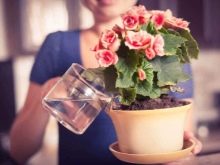
However, even if the conditions of care are met, owners of begonias may experience drying out of the flower. Consider situations when it is worthwhile to be wary and take measures to save the plant.
External signs of the disease
In cases where begonia does not receive proper care or is attacked by pests, a chic and graceful flower turns into an inconspicuous stunted plant. There are several signs that indicate that it is sick:
- begonia leaves dry at the edges, while they acquire a brown color, begin to break or crumble;
- the inflorescences wither, and, not having time to bloom, they crumble;
- leaves turn black and curl;
- bright yellow spots appear on the leaf plate.
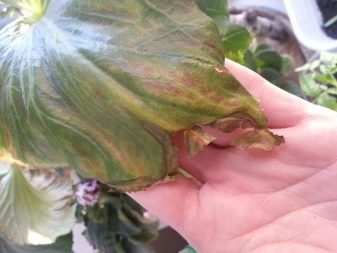

These problems can be caused by various reasons. If one or more of them are found, you must immediately take the necessary measures to treat the plant. Otherwise, the flower may die.
Why does the flower wither and dry up?
There are several factors that cause flower disease. This is the wrong care, infections and pests. Let's take a closer look at each of these reasons.
Inappropriate care
Begonia requires special attention and respect. Making mistakes when leaving can lead to the drying out of the flower. To create good conditions for indoor begonias for growth and flowering, as well as to prevent curling of its foliage, a sharp change in environment should be excluded. For example, it is not recommended to transfer the flower from the house to the street in the summer. The temperature difference will negatively affect the appearance of the flower.
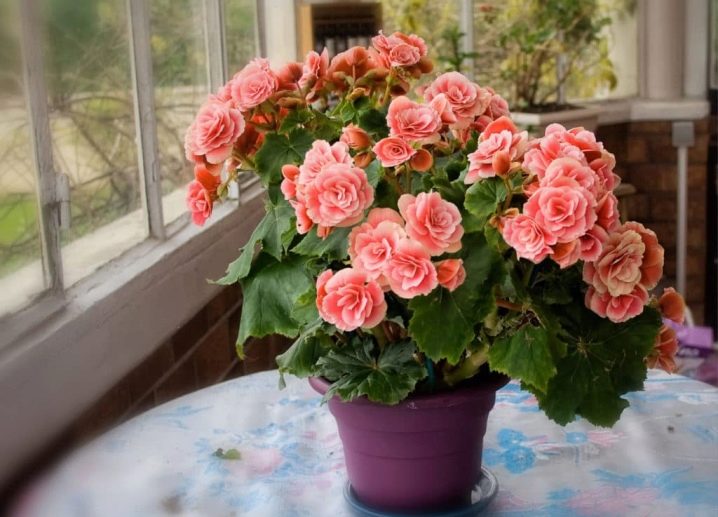
The following points can also lead to drying out of the plant.
- Dry air. Air humidity in the room drops in the summer heat and when the heating is turned on in winter. To prevent begonia from getting sick in winter, you need to hang wet towels on heating devices or install a container of water next to it. In addition, you can put the plant pot in a container with stones and water.
- Insufficient soil permeability. Due to the excessive density of the soil, excess moisture stagnates, which leads to rotting of the root system. If the roots are damaged, the flower will first wither and then dry completely. To prevent this, it is necessary to transplant the plant into new soil or add to the existing coarse sand or dried coconut fiber.
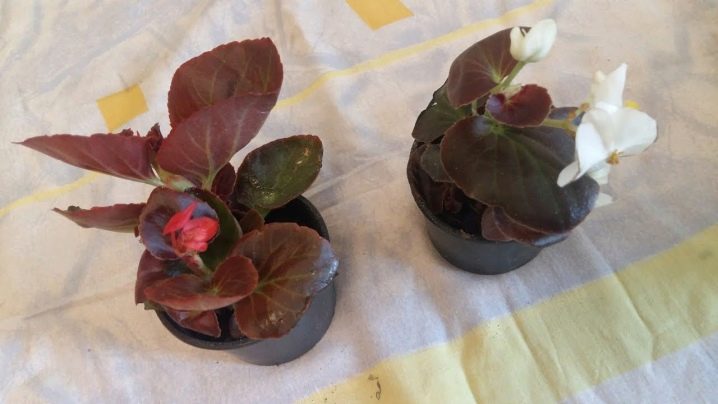
If the rules of care are followed, and begonia dries anyway, perhaps the reason lies in the lack of nutrients in the soil. To save a flower, it is important to feed it in a timely manner. Nutrients should be applied every two weeks before growing and during flowering and once a month after flowering.
When choosing a top dressing, it is recommended to give preference to formulations based on potassium, phosphorus or nitrogen. And it is also allowed to fertilize the ground with improvised components, such as wood ash or ground banana peel.
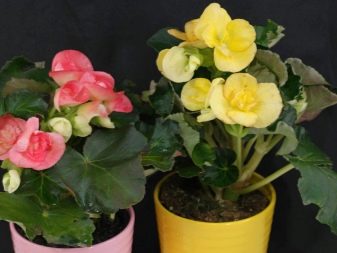
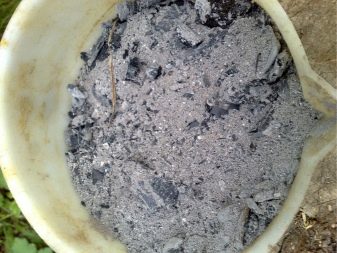
Diseases
There are several types of diseases that lead to wilting and drying of begonia foliage. Let's consider the most common ones.
- Bacterial spotting. A disease in which the formation of vitreous spots on the outside of the foliage is characteristic. Over time, the leaves turn brown, after which they completely die off and fall off. Some growers argue that bacterial spotting cannot be cured and the only correct solution is to discard the flower. However, in any case, you can try to save the plant. To do this, you need to get rid of the affected leaves, transplant the plant into a new soil (the old pot must be disinfected without fail), and then process the begonia with a 0.5% solution of copper oxychloride for several months.
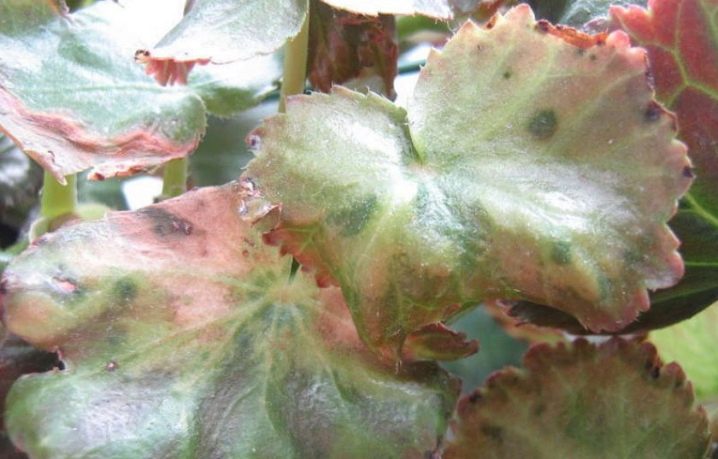
- Powdery mildew. According to statistics, this disease affects begonia more often than others. Symptoms of the disease are the appearance of white spots on the foliage. Over time, their localization spreads, spots cover the entire plate and move to new leaves. At the same time, a "powdery" plaque is formed on their surface.
If you do not take measures to save the flower, the affected leaves begin to turn brown, dry and fall off. To stop the development of the disease, it is necessary to spray the plant with 0.05 solution of "Morestan". For these purposes, any fungicidal compositions are also suitable.
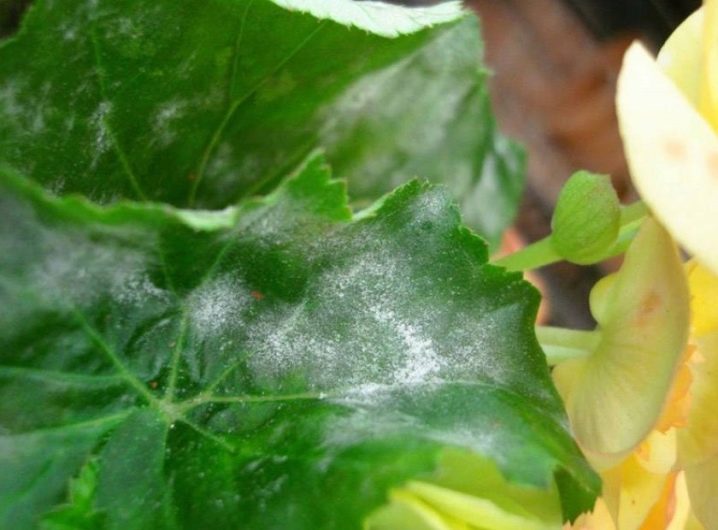
- Gray rot. It is easy to recognize this disease. Rot affects the foliage and stems of begonias - gray spots are formed on them. If proper measures are not taken to eliminate the disease, parts of the plant located above the ground become sticky, dry out and soon fall off. Typically, gray rot occurs when the soil is moistened abundantly. To cope with the disease and save the trunk, you should use a Bordeaux mixture or soap-copper composition.
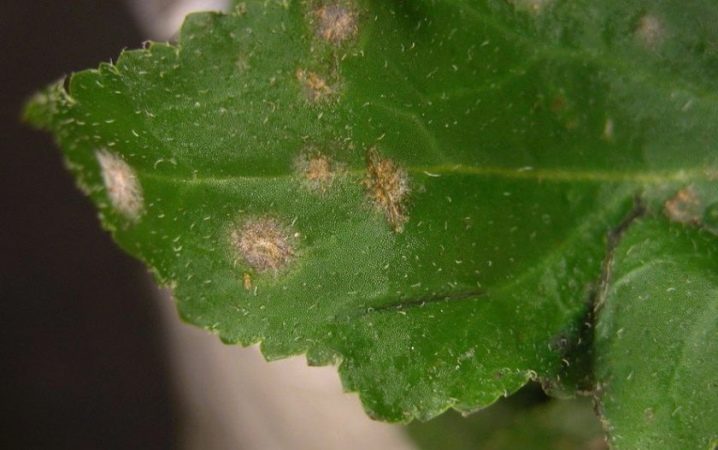
In order to prevent the occurrence of these and other diseases, you should choose the soil that is optimal for begonia and decontaminate it before planting. In addition, it is important to spray the foliage with "Immunocytofit" or other formulations in order to prevent the diseases described above.
It is important to remember that any disease is easier to cure in its initial stage. Therefore, at the very first signs of the disease, appropriate measures should be taken. In order not to run begonia, it is necessary to regularly check its foliage and stems.

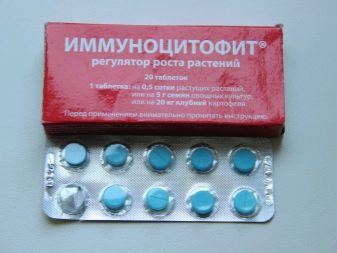
Pests
Most of their species can be seen with the naked eye. Pests pose a serious threat to begonias. If you do not take action to combat them, the flower may die.
The most common pest of begonias is considered aphid. These are small green insects, the size of which ranges from 2 to 2.5 mm. Aphids feed on plant sap. She digs into the luscious foliage, sucking out the useful liquid. As a result, yellow spots appear on the affected areas.
Over time, the leaf blades die off, dry out and fall off. To get rid of this pest, it is recommended to treat begonia with soapy water (soap and water are taken in a ratio of 30 g to 1 liter). An effective remedy is also considered Fufanon-Nova.
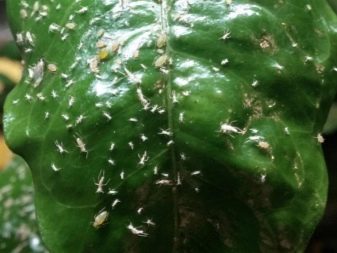
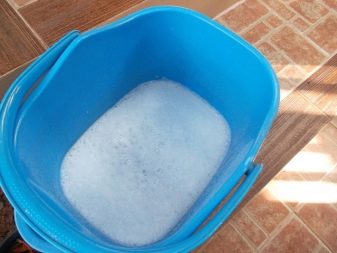
The next common pest of begonia is whitefly. It is the smallest butterfly with elongated wings, reaching 1.5 mm in length. When attacked by an insect, the leaves are the first to suffer. The whitefly lays up to 500 eggs on the back of the foliage during its life, which lasts up to 30 days. The larvae hatched after 10 days suck the juices from the begonia leaves, which leads to the drying out and death of the flower.
To save a flower from a whitefly, you should use specialized drugs, for example, "Confidor" or "Mospilan". They are sold in flower shops. Such formulations do not work on butterfly eggs, which is why plants should be sprayed every 5 days at least 3 times. Flying butterflies can also be collected with a vacuum cleaner.
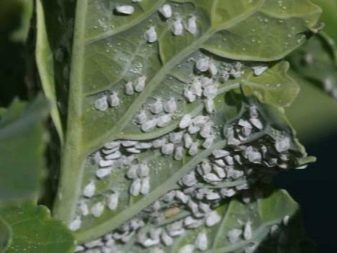

What to do?
If the once gorgeous and beautiful begonia suddenly dried up, you should not be upset and panic. Perhaps the plant can be saved. This is possible if the aerial part has dried up, and the root system of the flower is alive. To reanimate begonia, you should follow a series of simple steps.
- Carefully remove the root system from the soil, being careful not to damage its individual areas.
- Examine the roots. If there are no parasites or rot on them, the plant can be helped. In this case, the damaged areas of the roots are removed, and the remaining ones sit in a pot with soil.
- The soil should be fed, and then cover the pot with a plastic bag.
- Begonia is placed in a bright and warm place. If done correctly, new stems and young foliage will soon emerge from the soil.
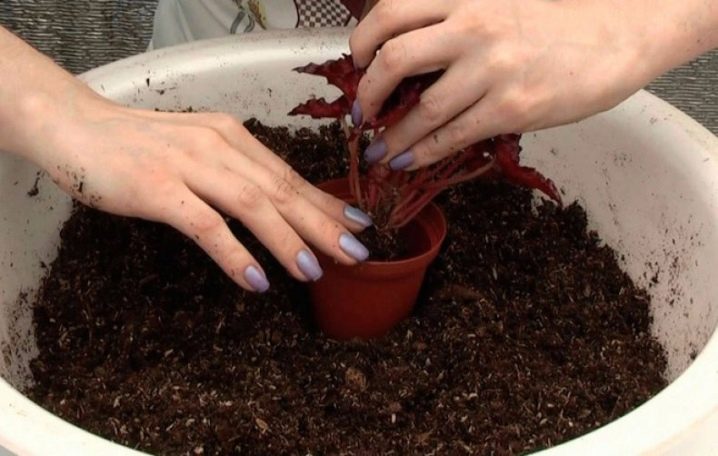
Drying of leaves is not always the result of improper care, attack by pests or infections. Don't worry if the lower foliage gradually dies off. This is a natural process found in most plants. If serious problems are found, begonias should be provided with quality care and treatment, and then the plant will again delight with dense foliage and abundant flowering.
For information on why begonia leaves dry, see the next video.































The comment was sent successfully.